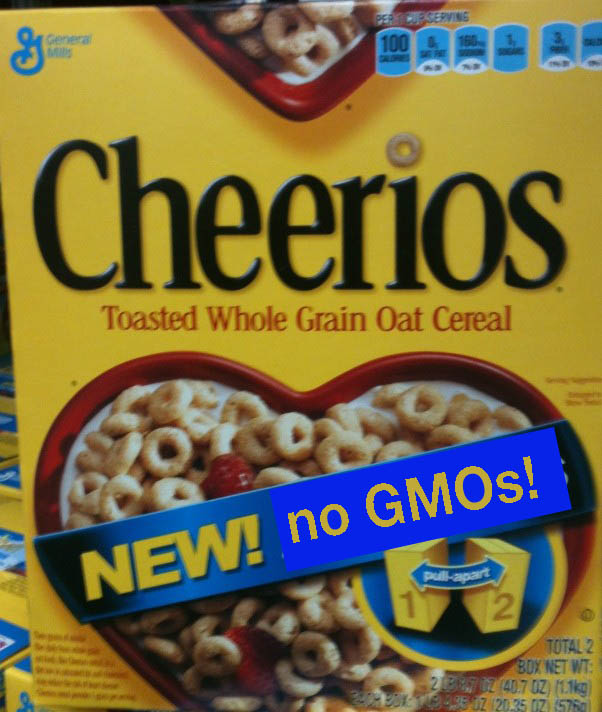Join Health Affairs for a virtual conversation between me and Angela Odoms-Young of Cornell University discussing the evolution of US food and nutrition policy, the current policy landscape, and thoughts on what lies ahead. It’s at 1:00 p.m. EDT. To join the Webinar, register here.
Some musings on non-GMO Cheerios to start the week
I read about General Mills’s introduction of non-GMO Cheerios back in January, but didn’t get around to looking for them until this weekend.
I was expecting to see something like this (thanks Fooducate):

Instead, the information is tucked into a side panel.
![]()
 This may explain why General Mills is complaining that the non-GMO is not doing a thing to boost sales of Cheerios. If anything, sales are “down somewhat.”
This may explain why General Mills is complaining that the non-GMO is not doing a thing to boost sales of Cheerios. If anything, sales are “down somewhat.”
And here’s a good one: According to one professor, the non-GMO Grape Nuts and Cheerios are going to be less nutritious than the GMO versions.
Post Foods’ new non-GMO Grape Nuts (click here ) no longer include Vitamin A, vitamin D, vitamin B12 or vitamin B2 (Riboflavin)*, while the new non-GMO Original Cheerios no longer have Riboflavin on the ingredients list (the old version has 25% of the daily value in a 28 g serving while the new version has 2% of the DV).
How come? It’s hard to find non-GMO vitamins (who knew?). Vitamins, it seems are often produced from genetically engineered microorganisms, or from microbes growing in fermentation tanks that are fed a nutrient mix that contains ingredients from GM sugar beets or corn.
Should we be worried about nutritional deprivation among Cheerios eaters?
Cheerios are essentially a vitamin pill wrapped in rapidly absorbable starch.
The ingredients: whole grain oats, corn starch, sugar, salt, tripotassium phosphate, wheat starch.
Everything else is added vitamins.
Personally, I prefer my cereals with no added vitamins (they taste bad). And I doubt they make much difference to health.
Whether non-GMO will have a noticeable effect on sales of Cheerios remains to be seen.
If General Mills doesn’t advertise the change, it can’t expect non-GMO to boost sales.
Curious, no?

